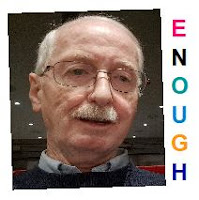The Heartland Alliance released its latest data tables last week. I wonder who in Chicago is using this information to understand where youth need extra help in the non-school hours, based on levels of poverty in their community area?
Here's an example of the data available on their site
Below is the same table, along with maps that I created from other sources. The first one shows the North Lawndale area of Chicago.
 |
This second one shows the Albany Park community area.
I used data provided from the Heartland Alliance in 2011 and again in 2018 to create the presentation shown below. It includes maps for each Chicago community area, with the total number of kids age 6 to 17 and the number who fall into the poverty level.
In the above graphic for the North Lawndale area I used a map showing shootings that had been published by the Chicago SunTimes, along with a map from the Program Locator (no longer available) that my organization created in 2008.
View the presentation below to see more examples of maps being used to help determine where non-school programs are needed, where existing programs are located, and where more are needed.
In early June I posted this article, asking who is doing research about youth program availability. The two SlideShare presentations are examples of the type of analysis that needs to be done ... with much greater depth and professionalism than what I've been able to create.
Since 2011 I've not been able to update or continue to develop this and now it's only available via the Internet Archive. Had I been able to continue development we would have expanded the type of programs were were looking for, to include arts, technology and youth development categories.
Combining the fund raising feature with the maps of each community area was a strategy intended to drive resources to EVERY high poverty area of Chicago, not just the most visible areas, or the most well-known programs.
I described this fund raising strateg on this page.
Building a segmented, searchable, list of non-school youth serving programs would be a valuable resource for Chicago or any city. Helping those programs attract operating dollars and volunteers would help each program operate and constantly improve.
However, without the demographic information such as provided by the Heartland Alliance (and others that I show on this concept map), leaders, volunteers and donors don't know where programs are most needed. Without providing the number of kids within a community area who live below the poverty line, it's impossible to gauge weather or not enough kids in each grade level are being served by existing programs. Without segmenting the program list by type of program we might see a density of icons on a map, but still be not providing needed services in many places.
Finding a way to gather this data and use if for analysis is a huge challenge.
We continue to be reminded by daily media stories of the results from not having the type of support systems for too many youth that might offer hope and opportunity and serve as a disincentive for gangs, crime and violence.
Tutor/Mentor programs are not quick fixes. Yet if leaders had embraced the strategies the Tutor/Mentor Connection was piloting in the 1990s and sustained them for the past 25 years, I feel that a lot fewer young people would be lost.
If you've read this far, thank you. As the graphic at the left illustrates, we're all able to access these articles via our computer and phones. Start skimming through my archives. Share what you read with people in your network. Help find the leaders and philanthropists needed to build this research capacity.
Create a new portal, available FREE via open source code, so that it can be adopted and used everywhere. Create communities on social media where people creating and using these portals, and who are building tutor/mentor programs, can connect and learn from each other and build the public will needed to generate the flow of resources essential not only to support the platforms, but to support the thousands of youth tutor, mentor and learning programs that are needed in high poverty areas around the country.
If you can help Fund the Tutor/Mentor Institute, LLC with a small contribution, please visit this page.











